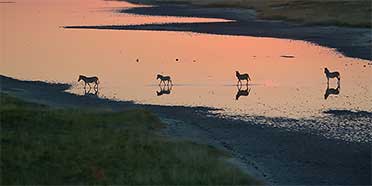
Safari Tours to Makgadikgadi Pans NP
-
![10-Day Extraordinary Expedition]()
10-Day Extraordinary Expedition
$6,595 to $11,231 pp (USD)
Botswana & Zimbabwe: Private tourLuxuryLodge
You Visit: Maun (Start), Makgadikgadi Pans NP, Okavango Delta, Savuti (Chobe NP), Chobe NP, Victoria Falls (End)

Safari Online
5.0/5 – 131 Reviews
-
![10-Day Botswana Wildlife & Birdwatching]()
10-Day Botswana Wildlife & Birdwatching
$21,199 to $26,999 pp (USD)
Botswana: Private tourLuxury+Tented Camp & Tented Bush Camp
You Visit: Maun (Start), Makgadikgadi Pans NP, Okavango Delta, Maun Airport (End)

Wayfairer Travel
4.8/5 – 185 Reviews
-

7-Day Botswana Safari - Okavango Delta to Salt Pans
$21,443 pp (USD)
Botswana: Private tourLuxuryLodge & Tented Camp
You Visit: Maun (Start), Makgadikgadi Pans NP, Okavango Delta, Maun (End)

Viatu
4.9/5 – 93 Reviews

 Botswana Parks
Botswana Parks











